Bali: Tirta Gangga, or Water Palace
This place was built in the 1940s by a king of south-central Bali – several sculptures are dated 1948. It’s name means waters of the Ganges, and although it’s remote from India the water did seem pure and plentiful. I don’t know if it’s source is springs or rain. At any rate it’s not a temple, despite the name. It was a pleasure palace for him, and he enjoyed digging in the mud and excavating the pools alongside his workers. Now I think his family still lives in the living quarters adjacent to the water gardens, but there’s also a villa where visitors can stay, and a cafe. Admission is about US 50 cents for Indonesians, 90 cents for foreigners, and you can swim in the pools if you like.
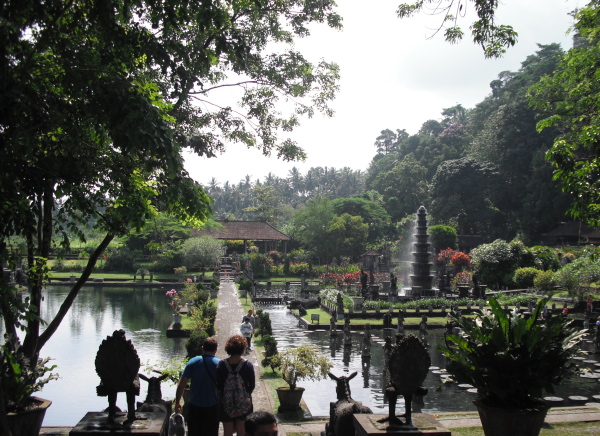
This is the view from the entrance. Outside the entrance are lots of little shops selling snacks and souvenirs, and people trying to become your tour guides. Including one man with a speech impediment, who ever so cheerfully guided us from the parking lot to the entrance and then used a lot of sign language to sell us a little notebook.
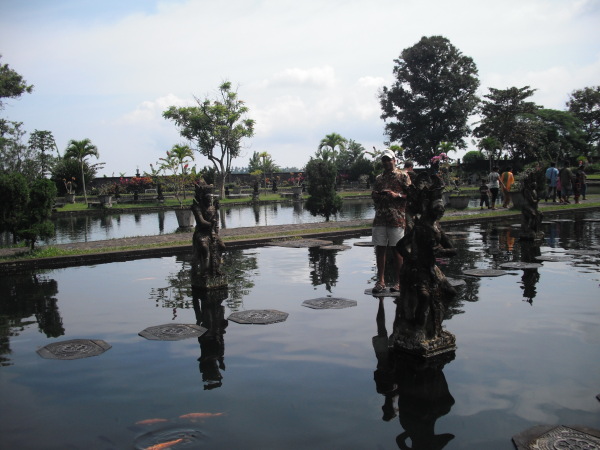
There’s a large pool with stepping stones that make a path between lots of sculptures of warriors and curvaceous maidens. You hop from pillar to pillar and watch the fish beneath your feet. It’s fun!
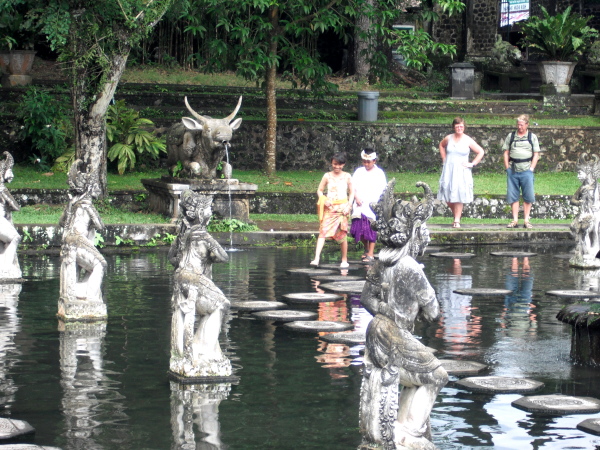
This pool is surrounded by various animal-shaped fountains that pour or drip into it.
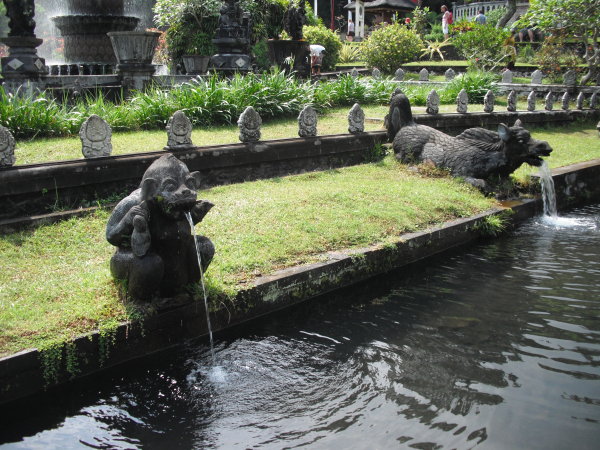 Monkeys, bulls, donkeys, you name it. Tigers too:
Monkeys, bulls, donkeys, you name it. Tigers too:
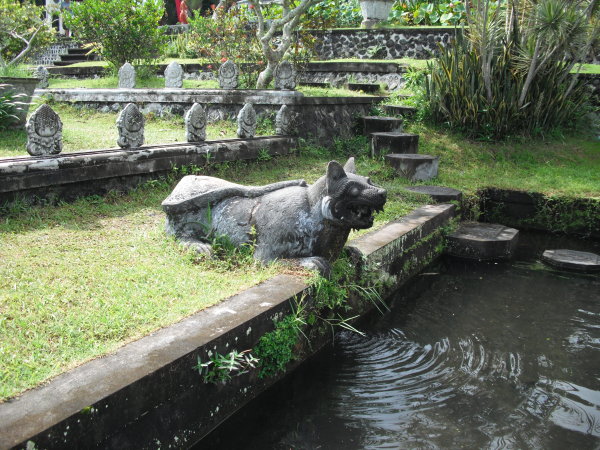 And this being Bali, where it is widely believed that bulls are the vehicle that transport your soul to the afterlife, bulls as well:
And this being Bali, where it is widely believed that bulls are the vehicle that transport your soul to the afterlife, bulls as well:
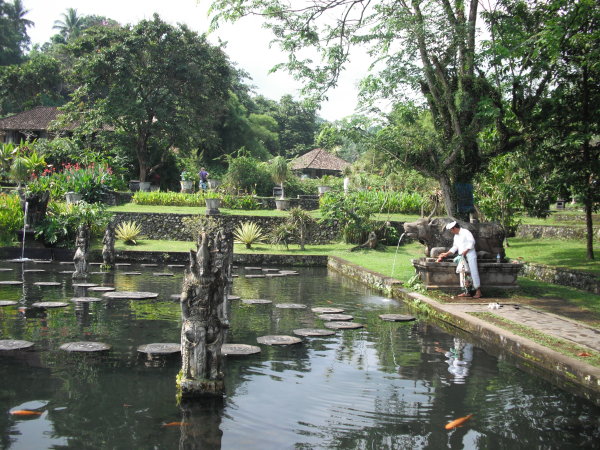
There’s an ornate eagle or goose in the forefront; eagles, geese, swans and vultures all feature prominently in Balinese culture, generally tied to Hindu mythology, and appear all over the place. They all tend to have very ornate and spiky adornments, so often you can only tell the species from the context – which gods they accompany. Beak shape and neck length are of limited diagnostic utility.
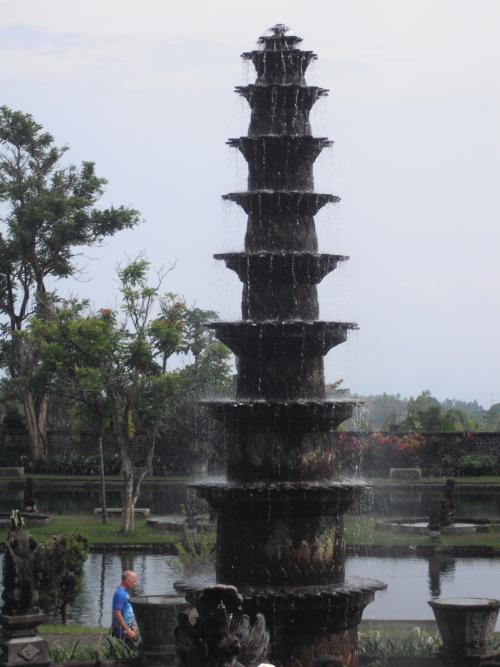
Here’s a closer view of the central pagoda fountain.
Another feature is arched bridges between some of the other pools, with snakes sculpted over them:
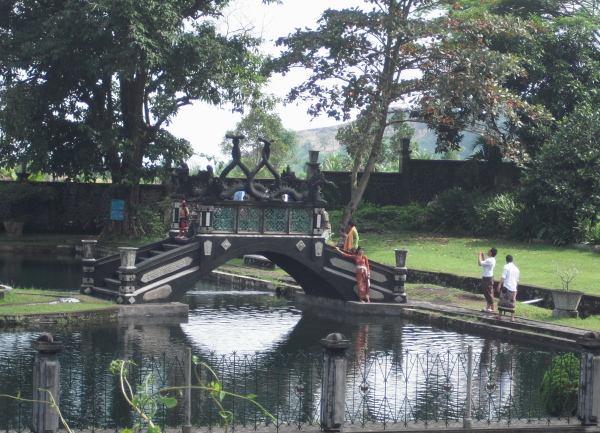
These dual crowned snakes are EVERYWHERE in Bali, at the base of every temple tower, at the crown of many buildings and shrines. They have names and represent humanity’s earthly needs.
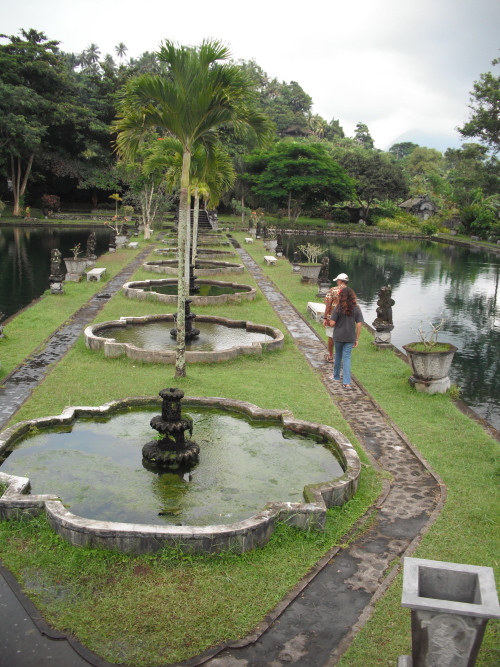
This looks downright European. But look at the fountain feeding the pool to the right:
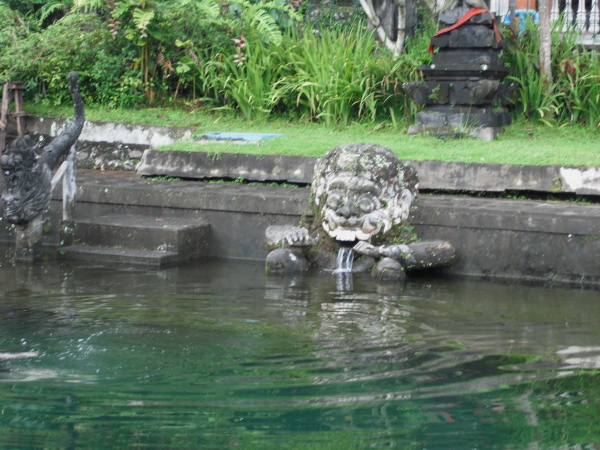
These images are everywhere too – over temple gates, over doors at the airport; they are not exactly evil spirits but embodiments of the cruder, tougher and nastier elements of human nature. Properly propitiated, they act as guardians and keep bad guys at bay.
But this figure mystifies me entirely:
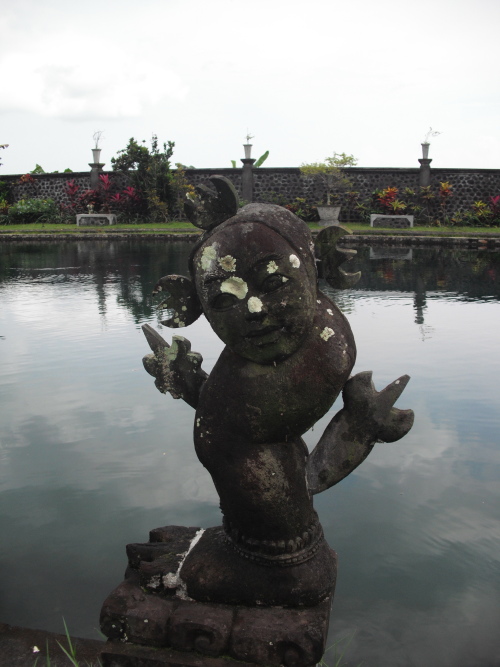 A serene face on a foot, with knives sticking into the supporting leg? And are those knives sticking in its head? If you know what this represents, do tell!
A serene face on a foot, with knives sticking into the supporting leg? And are those knives sticking in its head? If you know what this represents, do tell!